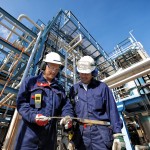In a recent legal case I was hired to provide expert consulting concerning a 40-year-old deckhand who claimed a lower back injury that resulted from lifting a 40 lb rope wire. This deckhand was a heavy smoker, who self-reported that he had smoked at least a pack of cigarettes every day since age 15. Within a month of the alleged injury he underwent a lumbar fusion by a surgeon recommended by the plaintiff’s lawyer. The fusion failed resulting in a report by the plaintiff of chronic, intractable lower back pain and total disability from any kind of work.
Upon further review of the medical records and discovery documents, it became apparent that the plaintiff had continued to smoke immediately before and after the surgery. Defense counsel focused in on this issue during a deposition of the surgeon who performed the lumbar fusion on the plaintiff. Unbelievably, the surgeon testified in deposition that there was no association with smoking and failed spinal fusion! In fact, I had to read the deposition transcript twice to believe my eyes. I thought, how could this surgeon not be aware of all the medical literature that points to the contrary?
In the Burton Report, an article addressed the relationship of smoking to spinal disease. When we reach adulthood, our intervertebral discs lack an adequate blood supply. Instead of receiving nutrients from blood vessels the discs obtain nutrition from a process of passive diffusion of fluids passing from the vertebral bodies above and below the disc via perforated cartilaginous end plates. When we smoke cigarettes, nicotine and carbon monoxide enter the blood stream and pass into our body tissues, including the spinal discs and vertebrae. Nicotine and carbon monoxide have well researched and documented adverse effects on bone metabolism and bone re-growth.
Consequently, there should be no surprise that researchers have found that smokers have up to 4 times greater risk than non-smokers to develop degenerative disc disease. The vertebrae in chronic smokers are not as strong or healthy as non-smokers. Analysis reveals that smokers have fewer, and less functional, bone forming cells and that bone becomes mineral deficient. This condition leads to softening of the bone or osteoporosis.
When one considers that other than chemical dependency and psychiatric illness, the highest single cost for health care in the United States today is that of treating back problems, the contribution of cigarette smoking to this malady should not be overlooked. Besides the unfortunate association between cigarette smoking and degenerative disc disease, it is well established that back surgery patients who smoke do not spontaneously heal and have a higher failure rate of surgery in general and fusions in particular. Because of the adverse effect of nicotine and carbon monoxide on bone metabolism and bone growth many spine surgeons require patients undergoing elective fusion to be non-smokers for at least 3 months to clear their bodies of stored nicotine. Surgeons concerned about patient compliance with this requirement can analyze blood levels of carboxyhemoglobin and urine level of nicotine prior to surgery.
So one must ask, did the lifting incident cause the deckhand’s back injury or did his smoking habit cause it? Did his surgery simply fail or did his smoking habit cause it to fail? Was the surgeon incompetent or intellectually dishonest by not recognizing the impact of smoking on the surgical outcome? Is the plaintiff now truly permanently disabled because of his nicotine addiction and the mishandling of his surgical care? Did litigation influence his actions in the first place to even consider having surgery? We can only speculate of course. And of course, as we continue this speculation, employers will continue paying millions for health problems caused by smoking.
Reference: The Burton Report
Republished with permission by Dr. Richard Bunch, WorkSaver Systems.



